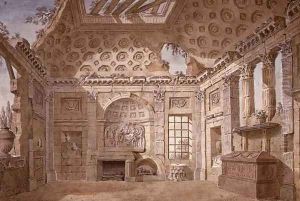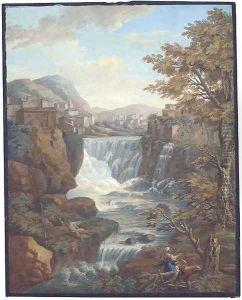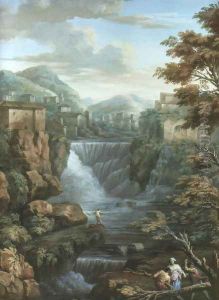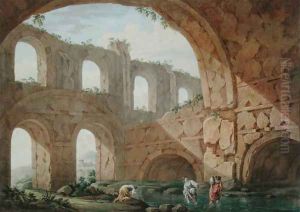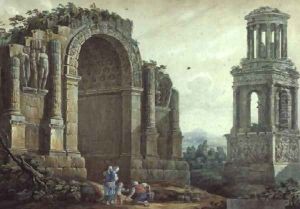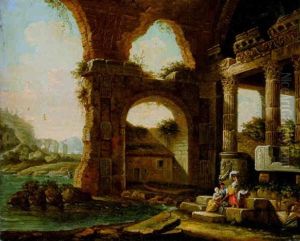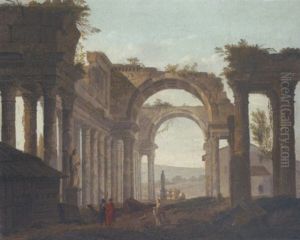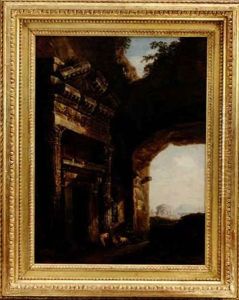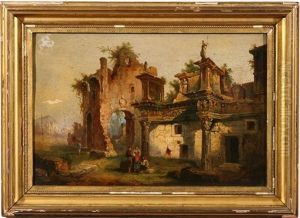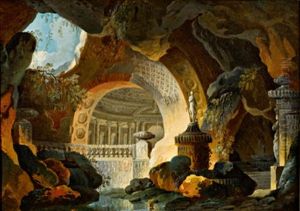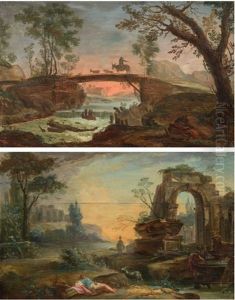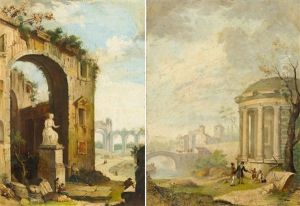Charles-Louis Clerisseau Paintings
Charles-Louis Clérisseau was a French architect, draughtsman, and designer who played a significant role in the Neoclassical movement that swept through European art and architecture in the late 18th century. Born on August 28, 1721, in Paris, France, Clérisseau was initially trained at the Académie Royale d'Architecture. His talent was recognized early, and he won the prestigious Prix de Rome in 1746, which allowed him to study at the French Academy in Rome from 1749 to 1754.
During his time in Rome, Clérisseau developed a passion for ancient Roman architecture, and he became particularly interested in the study of ruins. His detailed drawings and watercolors of Roman antiquities gained him a reputation as an expert on ancient architecture. He was instrumental in the rediscovery and documentation of the remains of the ancient city, which would later influence the Neoclassical aesthetic.
After his return to France, Clérisseau struggled to establish himself as an architect, but he found success as a teacher and an artist. Among his notable students was the young Thomas Jefferson, who would later become the third President of the United States. Jefferson, while serving as the American envoy to France, met Clérisseau and was deeply influenced by his ideas on architecture. Clérisseau's drawings and theories contributed to the design of the Virginia State Capitol, one of Jefferson's architectural projects.
In addition to his influence on Jefferson, Clérisseau was also a key figure in the design of the architectural fantasies known as 'capricci,' which were imaginative compositions that combined real and fictitious architectural elements. His works in this genre were widely admired and emulated by contemporary artists.
Clérisseau's expertise extended to the field of archaeology as well; he was involved in the early excavations at Pompeii and Herculaneum, which were buried by the eruption of Mount Vesuvius in AD 79. His observations and drawings from these sites provided valuable insights to scholars and furthered the understanding of ancient Roman life and architecture.
Later in life, Clérisseau moved to Russia, where he worked for Catherine the Great. He contributed to the design of several significant buildings in St. Petersburg and was a part of the cultural milieu that sought to infuse Russian architecture with Neoclassical ideals.
Charles-Louis Clérisseau died on January 19, 1820, in Paris. His legacy is preserved in his drawings and engravings, which continue to be studied by architects, historians, and art enthusiasts. His work played a crucial role in shaping the Neoclassical movement, and his influence can be seen in the architectural heritage of both Europe and America.
